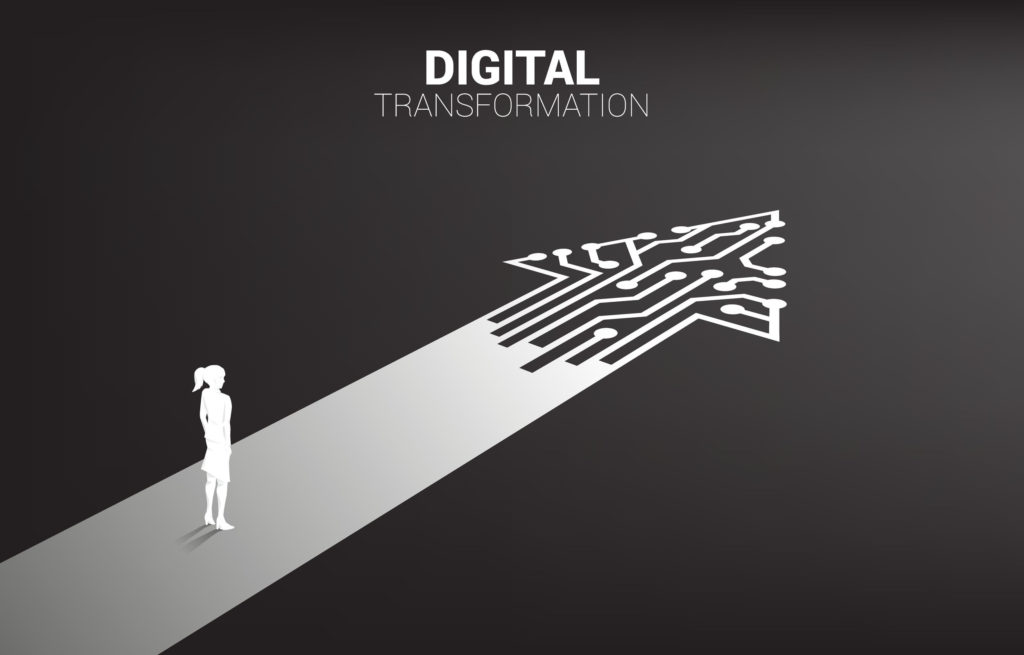By Patrick O’Neill, Founder and President, Redhand Advisors
Digital transformation is the process of using digital technologies to create or modify business processes, culture, and customer experiences to meet changing business and market requirements. It’s the total transformation of all business processes using digital technology to create a streamlined workflow that eliminates outdated, often manual processes.
Although every digital transformation initiative will have its own goals, the main purpose is to improve current processes — including risk management functions. RMIS can be the platform on which a risk management digital transformation initiative is launched.
Debunk the myth: Take one small step at a time
Many businesses view digital transformation as overwhelmingly complex. When you do, it’s easy to kick the can down the road. However, when broken down into smaller bite-sized chunks taken one at a time, digital transformation becomes less daunting.
In fact, it then can be viewed as what it really is: crucial to remain competitive and respond to customer demands. For every organization, the benefits of digital transformation will vary, but in general, positive outcomes include:
- Increased productivity: Organizations and risk managers can make decisions much faster than before, using real-time data and analytics. That leads to more efficient operations and eventually to cost savings.
- Improved collaboration: To be effective in a risk management role you have to coordinate across the business, bypassing the silos within it. If you’re managing risk for an entire organization, you must collaborate with business units, other departments, employees in the field, and others. In the past, RMIS typically was only used by the risk-management team; today, hundreds of users access RMIS systems across businesses.
- More holistic organizational approach to risk management: One of the challenges of collaborating with multiple stakeholders on risk is communication of information. Digital transformation improves the risk-management experience by making it easier for stakeholders to report, self-monitor, and collect data; integration of multiple systems can speed data collection and further improve those processes.
Once the myths around scope and size are debunked, the most significant hindrance remaining typically revolves around change management. Don’t be surprised when you meet resistance. The COVID-19 pandemic and remote working has only exacerbated this pain point for many. Helping peers understand that they must challenge the status quo and often eliminate long-standing, legacy business practices and technologies in the name of efficiency, productivity and reduced risk is imperative.
The prevalence of legacy technology can also be a deterrent to successfully embarking on a digital transformation strategy. Legacy solutions lack flexibility and capabilities to support a digital transformation and prevent many organizations from implementing analytics, real-time data, and a digital experience. But it can also serve as a driver for digital transformation.
Plan your trip down the path of real change
The road to digital transformation becomes easier to navigate with the proper preparations and a clear strategy. Here are some guidelines on how to begin your journey:
- Audit and review the current state of the system and business process in place. What is being done manually or not at all?
- Define the future vision of your business processes. Where do you realistically see a digital transformation project taking the business? What steps should be taken to ensure that the ultimate vision for the project matches up with the company’s overall objectives?
- Identify current gaps within your organization’s current state and the future vision. Are these gaps canyon-sized or much smaller? How many steps will you need to get from Point A to Point B and beyond? Just closing the gap can be considered a success.
- Build a roadmap for your digital transformation and break up objectives into more manageable, bite-sized steps. Furthermore, understand that not every initiative requires a complete change of the RMIS system. There are times when the digital transformation will call for an overhaul or replacement of current systems. Other times, it’ll mean simply making modifications and improvements on what is already in place. Build the roadmap around these foundations:
- People – Identify key stakeholders from across the organization and bring them into the process from the start to prevent delays based on misinformation or resistance to change.
- Process – Break down key activities and processes, including what will be automated and which processes will be streamlined, and assign priorities.
- Technology – Determine if the right systems are already in place to accomplish the transformation. If they cannot address the issues at hand, find solutions that can.
A continuous journey
The final big-picture misconception you may need to dispel is the idea that there is an ultimate finish line. But digital transformation isn’t even a marathon, it’s a continuous journey. New technologies and strategies are always emerging, and older technologies become obsolete or get overhauled. What works today might not serve you well in the future.
That’s why embarking upon a digital transformation initiative truly means you’re starting down a path to continuous improvement. Always be on the lookout for new advancements to position your company as a true digital trailblazer.
Schedule an inquiry call with Redhand Advisors for further guidance on how to get started with your digital transformation.
